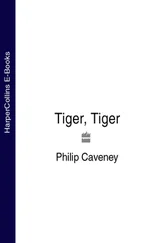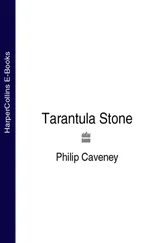The absence of green plants in caves led early biospeleologists to the conclusion that cavernicoles are starved animals. In 1886, Packard insisted that the shortage of food available to cave animals is the reason for their small size. While it is self-evident that large animals with a high metabolic rate can have no place in an entirely heterotrophic, food-poor ecosystem, in reality many cave species are actually far larger than their surface relatives. Most recent studies have shown that cave-evolved animals (troglobites) have unusually low metabolic and growth rates and that they save energy in every way possible, by streamlining their movements and by adopting highly efficient foraging and reproductive strategies. These are obvious specializations to cope with a low food supply, and seem to be a fundamental characteristic of cavernicolous evolution at temperate latitudes like ours. Some cave species are remarkable in their metabolic efficiency and consequent ability to tolerate starvation. Gadeau de Kerville (1926) reported that a specimen of the Slovenian cave salamander, or Olm ( Proteus ), had been kept in captivity for fourteen and a half years, and for the last eight of these had received no food. He did not report whether it eventually died of starvation or just plain old age.
Some more recent cave biologists have noticed that captive Olms regularly slough and then eat the mucus layer which, like an extra skin, covers and protects their whole body. Mucus is sticky and microscopic examination has shown that in captive amphibians it becomes encrusted with bacteria, algae and protozoa. So de Kerville’s amazing ‘non-feeding Olm’ may all the time have been sneaking clandestine meals of diatoms-in-slime – not the tastiest of fare, but enough to keep it ticking over. Streams sinking into caves must carry with them a fair load of phytoplankton, and it may be that the Olm’s mucus-eating behaviour in captivity has some adaptive significance in the subterranean rivers where it lives.
Fig. 2.8 Olms ( Proteus anguinus) – blind, depigmented cave salamanders which retain gills and an aquatic lifestyle as adults.
In a closed system, such as our Olm aquarium, the recycling of dissolved nutrients could go on endlessly, providing the Olm did not lock them up as extra Olm tissue. Once equipped with a source of energy – sunlight from the nearest window will do – the tank becomes a self-perpetuating ‘mini-ecosystem’. Because caves are perpetually dark, production cannot meet demand and they can therefore never be considered as proper self-sustaining ecosystems. But the waters which form, enlarge, infill and eventually destroy caves almost invariably carry organic compounds – complex chemicals gathered from the soil or the breakdown of animal and plant detritus. Organic chemicals (dissolved in water, or clumped together in big lumps of detritus) fill the role of an energy source in the cave. There has been much speculation by cave biologists over the extent to which dissolved organic substances can be absorbed directly by aquatic cavernicoles. So far the evidence is inconclusive, but there is no doubt that they are captured by microfungi, bacteria and protozoa, which are plentiful at least in some allogenic cave waters. So, one way or another, all organic material entering the cave becomes available to the bottom rung of cave animals – the detritivores which fill the equivalent role to the primary consumers of the sunlit world above.
While the photosynthesising parts of plants have no place in caves, there is no reason why their roots should not penetrate into subterranean voids. Indeed, in the lava tubes which run just beneath the skin of the active volcanoes of Hawaii, tree roots form dense subterranean forests which support a range of sap-sucking bugs, root-chewing caterpillars and their predators; pale-skinned, eyeless relatives of species found in the forest above. Roots seldom penetrate into macrocaverns in Britain, but they may constitute a significant food source in a number of other cave habitats, such as the SUC, culverts and slutch caves. No one seems to have investigated root-associated faunas in such locations, but it would surprise me if such a widespread niche is not occupied by at least one insect specialist.
Second-hand plant material takes many forms: autumn leaves carried on a sinking stream, tree trunks hurled into a pothole by violent floods, or well-rotted humus quietly inched down the cracks of a limestone pavement. Usually by the time such materials reach the depths of the cave where the true cave faunas live, they have been thoroughly pulverised by water and rock, tenderised by bacteria and fungi, and often enough, passed through a series of invertebrate guts.
This was brought home to me during my first visit into the higher levels of GB Cave in the Mendip Hills, several years ago. The upper levels of the cave contain a series of narrow rifts which leak water from the overlying land whenever it rains. I was hunting for tiny cave beasts in these upper levels, and looking out for patches of fresh mud which I guessed would be organically richer and so would contain more life. I soon began to realize that each and every sediment cone emanating from each and every leaky crack was made up of thousands of tiny mud pellets, like scaled-down grains of rice. They were arthropod droppings – hundreds of millions of them, forming a deposit which over the centuries was gradually filling up the upper dry passages, and probably the lower reaches beneath the water table too. Fortunately, most cavers are blissfully unaware of the true nature of the substance which they spend each weekend crawling through and, no doubt, liberally ingesting themselves.
Biologists used to studying ecosystems based on living plants too often treat detritivores – animals which eat dead organic material – as a single dietary category. In the cave ecosystem, all the first-level consumers are ‘detritivores’ and it is surprising just how many different specializations they manage. This is most clearly seen in guano communities, where chains of very specialized organisms use different components of the insect remains which form the bulk of bat droppings. Stuart Hill has studied the ecology of one such community in a bat cave in Trinidad. Guano of the funnel-eared bat, Natalus tumidirostris (notorious, incidentally, as a carrier of the human diseases, relapsing fever and blastomycosis), was eaten as soon as it fell by a cockroach, Eublabarus distanti , which removed most of its fat and some of its protein (much of the unbound protein having been already stripped out in the gut of the bat). The cockroach droppings, still rich in chitin, were decomposed by a fungus, Penicillium janthinellum. This in turn was fed on by the mite Rostrozetes foveolatus and various other tiny arthropods. The mites in turn were eaten by other arachnid predators. Similar sorts of food chains probably operate in British bat caves, but the research has not yet been done.
In our present ignorance, we really do not know exactly what many of our British cave detritivores get out of their ‘junk food’ diets. There must be some degree of specialization, because certain types of materials are largely ignored by certain cave animals, while others attract them strongly.
One way to study dietary specialization is to put down baits in the cave and see what species come to them. The baits should be very small or they will provide an un-natural boost to the numbers of certain species and so upset the balance of the cave community.
I tried a baiting programme in the Ogof Ffynnon Ddu system in Wales, during the course of a wider survey of the fauna. I already knew, from a number of earlier collecting visits, that at least six species of fly were common in the upper level passages (a dung fly, a coffin fly, a winter gnat, and three or more fungus gnats), together with eleven springtail species, a millipede, a woodlouse and various beetles and mites. All were associated with detritus in one form or another, so when I put down small pieces of raw liver or cheese in various choice spots, I expected to gather quite a collection of invertebrates. Over the next couple of weeks I came back regularly to check the baits and was disappointed to find nothing on them. By now the liver was beginning to get a bit unsavoury and the cheese had gone slimy. Two and a half weeks after placement, I found every single liver and cheese bait crawling with the slender maggots of the winter gnat, Trichocera maculipennis , but still nothing else came near them. Eventually, the larvae crawled away to pupate, the bacterial smell subsided, and only then did a few Folsomia springtails gather in the area. So, far from being unspecialised scavengers, these detritivores showed themselves to be quite a discerning bunch.
Читать дальше












